 |
 |
|
 |
| |
I want to make sure no-one steals my good idea before I can develop
it for the marketplace. Maybe I should keep it a secret. What else can I do?
|
|
|
 |
| |
Intellectual property is a name for the legal rights people
have to protect the results of their creative work. Innovations often
include new designs, logos and technologies that have been specially created.
Patents, trademarks, copyright, design registrations and secrecy are some
of the aspects of protecting your valuable intellectual property.
Innovators can use intellectual property rights to provide
security for their ideas while they develop them into commercial products.
To obtain a patent on a novel product or process, the innovator must apply
to the Patent Office. If the patent is granted, the innovator has exclusive
right to use the invention for a limited time. In return the innovator
has to publish details of the invention.
Not every innovation can or should be covered by a patent.
If only the external appearance of a product is novel, the product design
can be registered. Trademarks can also be registered to obtain legal protection,
while copyright is automatic. For more information about intellectual
property in Australia see http://www.ipaustralia.gov.au.
Intellectual property, like other forms of property, can
be traded. It can be sold to another person or firm. It can be licensed
to another firm, which allows it to use the intellectual property for
a set time in return for a fee. A joint venture to develop a product allows
the benefits of intellectual property ownership to be shared between the
companies involved.
Strategies for protecting and using intellectual property
are an essential part of running an innovative business. Such a strategy
can prevent competitors from circumventing existing patents and producing
very similar products.
Failing to protect intellectual property has been acknowledged as
one of the main mistakes firms make in their commercial efforts, even
though it may seem expensive or unnecessary in the first steps of product
development.
J McKeogh and A Stewart, Intellectual Property in Australia, 2nd edn.,
Butterworths, North Ryde, 1997.
Intellectual property, in creating rights and providing security, acts
as a stimulant to and incentive for innovation.
Office of the Chief Scientist, Department of the Prime Minister and
Cabinet, The role of intellectual property in innovation, Strategic
overview, Volume 1, Australian Government Publishing Service Canberra,
1993.
World Intellectual Property Organisation http://www.wipo.int/index.html.en
IP Australia http://www.ipaustralia.gov.au/index.html
Institute of Patent and Trademark Attorneys Australia http://www.ipta.com.au
The Intellectual Property
Society of Australia and New Zealand http://www.ipsanz.com.au
Links to IP resources http://www.ipmenu.coml
Intellectual
Property UK Patent Office http://www.intellectual-property.gov.uk
|
|

|
| |
Bishop Technology Group – the power of patenting
Arthur Bishop's greatest contribution to Australian life
may not be his inventions, but his proof of a very simple
proposition: that exporting Australian knowledge can be
just as valuable as exporting our manufactured products.
Bishop's Sydney-based company produces ideas in the form
of designs. It employs a team of engineers and encourages
them to think and experiment. It uses patenting laws to
protect the devices they invent. These devices are developed
as products and licences granted for their manufacture.
The company also develops new machines and industrial
processes to build these new devices, patents the machines
and earns royalties on each machine as well as each product
made. Engineers in the company are taught about the process
of innovation and patenting.
Bishop's key inventions are variable-ratio steering technology
and a rotary valve for power steering. Both produce safer
and more precise car steering and handling and are used
in over 11 million new cars each year. Yet none of them
are made by Bishop's company – they are all made
under licence or in joint ventures with car makers. Bishop’s
patent royalties are worth A$14 million a year. Some element
of technology developed by Bishop is used in 20% of the
passenger cars made in the world each year.
|
|
 |
 |
| |
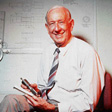 |
| Arthur Bishop at the drawing
board with his designs. Courtesy Bishop Technology
Group Limited. |
|
|
Introduction
Arthur Bishop has been described as a ‘modern-day
Leonardo da Vinci’. He is one of Australia’s
most creative inventors. His productive engineering career
began after he completed an engineering diploma and an
auto engineering apprenticeship. At the start of World
War II he was employed as a process designer with the
Department of Aircraft Production, where he was required
to redesign sections of the landing gear for Beaufort
and Beaufighter aircraft.
Arthur’s major aircraft innovation was a variable-ratio
nose wheel steering and damping mechanism that eliminated
wheel vibration or ‘shimmying’. After WWII this
invention was taken up in the UK and US, and Arthur began
making money from his patent royalties.
Confident that this aircraft invention could be used in
cars, Arthur travelled to Detroit, USA, to convince the
big car makers that his method was better than the traditional
technology for steering a car. He set up a research laboratory
employing several people, but failed to convince the car
makers to take up his ideas.
Arthur also approached European car makers to use his
ideas. Without a satisfactory method for manufacturing
the designs, his bids were not successful and he returned
to Australia.
Back home, Arthur was able to further refine his ideas.
In 1970 GMH pioneered Bishop’s power steering in
the HQ Holden Kingswood using a patented ‘hourglass’
shaped worm gear to provide variable steering response.
Ford Australia followed suit a year later on their Falcon
range of vehicles.
Both companies changed to rack-and-pinion steering in
the early 1980s and called on Bishop to design a variable-ratio
rack-and-pinion arrangement to match the hourglass worm
design. After gearing experts and manufacturers claimed
it would be impossible, Bishop’s development team
figured out how the variable-ratio system would work,
and how to mass-produce it.
Use of variable-ratio steering in Australian cars gave
Bishop the proving ground he needed to eventually succeed
overseas. Arthur Bishop was recognised internationally
as the originator of the variable rack-and-pinion steering
concept.
|
|
|
| |
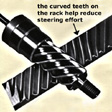 |
| Variable-ratio rack-and-pinion steering mechanism.
Courtesy Bishop Technology Group Limited. |
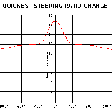 |
| Graph of steering ratio with turn. Courtesy Bishop
Technology Group Limited. |
 |
| Bishop variable ratio rack and pinion steering.
Courtesy Bishop Technology Group Limited. |
|
|
Bishop
steering technology
The mechanical system used to steer a car is usually one
of two basic types. The most common type of steering mechanism
is the rack-and-pinion system. The steering wheel is connected
to a pinion which, when rotated, moves the horizontal
rack that controls the movement of the front road wheels.
For more information about car steering systems see http://www.howstuffworks.com/steering.htm
The steering ratio for a car is the ratio of how far the
steering wheel must be rotated to how far the front road
wheels turn. A higher ratio means that the steering wheel
must be rotated further to turn the front road wheels,
but less force is required to do so. By making this steering
ratio vary with the angle of turn, Arthur Bishop created
a system that was stable when driving at speed on the
highway but also easy to turn slow corners or when parking
a car. For more on Bishop’s variable-ratio rack-and-pinion
steering, see http://www.bishopsteering.com/VR.htm
Several people had tried to develop such a system before,
but had concluded that it was not geometrically possible.
Arthur and his team not only developed a practical variable-ratio
steering system, but also created a new warm forging technology
to manufacture the components. At each stage of the development
process, Arthur and his team patented their ideas. This
included the process for making the components and the
mass production machinery used in manufacturing.
The Bishop Technology Group, founded by Arthur Bishop
in 1985, introduced numerous steering system innovations
to the automotive industry. The company’s team of
engineers, designers and intellectual property experts
ensured that Bishop’s steering technology was taken
up in the North American, European and Asian markets.
By 2002, Bishop Technology Group had three sections, specialising
in steering technology, manufacturing technology, and
innovation respectively. For more information see the Bishop Technology Group website, http:///www.aebishop.com.
|
|
|
| |
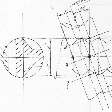 |
|
Patent drawing for variable ratio steering. Courtesy
Bishop Technology Group Limited. |
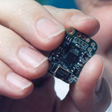
|
|
Dr John Baxter with the Bishop Torque and Angle
Sensor (BTAS), another Bishop steering innovation. Courtesy
Bishop Technology Group Limited. |
|
|
Using
intellectual property
The patent system plays an essential role
for the innovator in preventing others pirating his
ideas before he has had time to perfect them.
Arthur Bishop, BRW, 31 July – 6 Aug, 1982, p 34.
Since he applied for his first patent in 1943, Arthur
Bishop has developed many related patents. He has created
a ‘pyramid’ or ‘fence’ of patents
to protect his ideas, all potential uses, other similar
ideas and even the machines that turn his ideas into products.
This makes it difficult for other companies to copy his
ideas, and encourages them to buy a licence to use them
legally.
When he developed the variable-ratio steering mechanism
he patented not only the device, but every variation and
application he could imagine, and also the machines and
processes that make them. This gave him time to perfect
the idea and profit from its use in millions of cars.
It’s important to patent other ways
of accomplishing the same object, but also to find and
cover the best way to manufacture, or the best process
associated with that new idea. And so you build up a
matrix or pyramid of protection around the idea. That
makes it much more invulnerable to challenges by other
manufacturers who very often have resources which go
far beyond the innovators.
Arthur Bishop, 1992.
Arthur Bishop’s approach to the protection of his
intellectual property has seen his patents argued over
in courts in the UK, Japan and Germany.
We have to be very vigilant about defending
our patents. If an inventor or innovator is perceived
as being weak in defending his industrial property in
the marketplace, that market will walk all over him.
Dr John Baxter, Joint Managing Director, Bishop Innovation,
IP Australia, Bishop Case Study
http://www.ipaustralia.gov.au/strategies/case/X_bishop.htm
The Bishop Technology Group has continued to innovate
based on Arthur’s model of creating layers of patents
around a product. By carefully wording patents and strategically
planning intellectual property development, the company
can deter competition.
It’s like you’re Hansel and
Gretel dropping the white stones. You’re dropping
patents into the system all the time and basically your
competitor never gets a chance to pick up all the stones
because you’re always dropping new stones in front.
There’s a strategy in there of laying down a network
of interlinked patents… All the information is
there, but intellectually it is very hard for somebody
to come along later and unravel it.
Dr John Baxter, Joint Managing Director, Bishop Innovation.
Licensing
The Bishop company’s main product is intellectual
property that relates to transport engineering. The company
creates intellectual property and then licenses it to
other companies.
The model we have to use in this country
is more based on intellectual capital rather than actual
physical capital, and intellectual property is all about
intellectual capital. The business model that Arthur
has expounded for years has really been building on
intellectual capital, and licensing is a very good model
for commercialising that resource.
Dr John Baxter, Joint Managing Director, Bishop Innovation.
After first patenting his ideas, Bishop initially exclusively
licensed the steering technology. Once the technology
and products were accepted in the marketplace, the licenses
were re-negotiated as non-exclusive. By patenting both
the product, the manufacturing process and the manufacturing
equipment, the income from licensing fees is maximised.
The money earned from the licensing activity is returned
to the company, so research and development can continue.
By setting license fees at a suitable amount, the Bishop
Group encourages companies to license its technology rather
than attempting to develop their own solutions. The company
has its own equipment manufacturing division in Sydney
called Bishop Manufacturing Technology. Foreign companies
often purchase the equipment from this Bishop division
rather than taking up the licence to make their own equipment.
|
|
|
| |
 |
| Forging cell in the automated manufacturing
plant built as part of Bishop Steering Technology joint
venture with Mercedes-Benz Lenkungen GmbH (MBL) in Germany.
Courtesy Bishop Technology Group Limited. |
|
|
Joint ventures
Through joint ventures, the Bishop Technology Group can
develop intellectual property while ensuring the technology
has commercial applications. It can use partners’
knowledge and facilities to assist in creating intellectual
property. It can also participate in manufacturing the
products without having to outlay all the necessary capital
costs.
A joint venture is a very good way to leverage
your way into in-house manufacture. You have a strategic
partner put up half the capital and also they often
give you volume and an initial market for the product.
Dr John Baxter, Joint Managing Director, Bishop Innovation.
Teaching innovation
The Bishop Group teaches its employees about the process
of innovation. Seminars about patents and commercialising
technology help develop employees’ knowledge. Creative
thinking is encouraged and enthusiasm is directed into
strategic areas. Arthur’s approach to innovation
and intellectual property has become an integral part
of the company.
The process of innovation at Bishop begins by creating
intellectual property. The company reviews all the prior
patents and intellectual property in its field of interest,
including car magazines and other publications. To create
very novel patents or further strengthen existing patents,
the company files provisional patents based on new intellectual
property. Prototyping and refinement of the idea then
progresses until the completed patent is filed 12 months
later.
One thing about the business of building
a patent fence around something like this is that you
really have to explore every possibility. Having been
laying this patent pattern since 1955, I’m pretty
confident there isn’t another way around this tricky
problem.
Arthur Bishop, Wheels Magazine, April 1981, p 61. |
|
|
| |
|
|
The
impacts
After 50 years as a professional inventor, Arthur Bishop has
created hundreds of separate innovations. His company,
Bishop Technology Group, has expanded to employ over 220
people in Australia, USA and Germany and has generated
over 350 patents or patent applications. Bishop’s
innovations in steering technology are used in one in
five cars produced around the world.
Bishop’s model of selling ideas and intellectual
property is unique in the area of steering technology.
The strategic development and protection of intellectual
property has been critical to Bishop’s success.
|
|
|
| |
Links and references
Bishop Technology Group http://www.aebishop.com
Patent example http://www.ipaustralia.gov.au/ip/examples/P_case1.htm
Technology in Australia 1788 – 1988, ATSE http://www.austehc.unimelb.edu.au/tia/883.html
Bishop Austrans http://www.austrans.com/default.htm
IP Australia Bishop Case Study http://www.ipaustralia.gov.au/strategies/case/X_bishop.htm
7.30
Report, ABC TV, 30/01/2002 http://www.abc.net.au/7.30/s469910.htm
Digital image of variable-ratio rack-and-pinion http://www.zakgear.com/Rack.html
How car steering works http://www.howstuffworks.com/steering.htm
IP Australia http://www.ipaustralia.gov.au/index.html
World Intellectual Property Organisation http://www.wipo.int/index.html.en
Institute of Patent and Trademark Attorneys Australia http://www.ipta.com.au
The Intellectual Property Society of Australia and New Zealand http://www.ipsanz.com.au
Links to IP resources http://www.ipmenu.com
Australian Academy of Technological Sciences and Engineering, Commercialising Innovation
– ‘The Second Step’ Workshop Proceedings, Sydney, 10 May
2001 http://www.atse.org.au/publications/reports/nsw-commercialising.htm
BRW, 31 July – 6 Aug, 1982, p 34
J McKeogh and A Stewart, Intellectual property in Australia,’
2nd edn., Butterworths, North Ryde, 1997.
Office of the Chief Scientist, Department of the Prime
Minister and Cabinet, The role of intellectual property
in innovation; Strategic overview, Volume 1, Australian
Government Publishing Service Canberra, 1993.
Powerhouse Museum, unpublished interview with Arthur Bishop
and John Baxter, 12 June 2002.
Wheels Magazine, April 1981, p 61
Key
people
Dr Arthur E Bishop, Life President and Director, Bishop
Technology Group Limited
Mr Bruce Grey, Group Managing Director, Bishop Technology
Group Limited
Dr John Baxter, Joint Managing Director, Bishop Innovation
Limited
Mr Klaus Roeske, Joint Managing Director, Bishop Innovation
Limited
Mr Ken Palmer, Group Finance Director, Bishop Technology
Group Limited
Jobs
and skills
Inventor
Innovator
Entrepreneur
Manager
Marketing
Patent attorney
Engineer
Scientist
Discussion
questions
K-6
1. Why do we need to steer the direction of a vehicle?
2. Investigate different machines or vehicles that use
steering technology. Compare small and large vehicles
and their different methods of steering.
3. What is ‘power steering’? Why is it useful?
4. What is meant by the term ‘property’? Why
is property protected by laws? Discuss how someone might
protect their ideas or creative work. Look for products
or publications which contain the following symbols ©,
®, ™ and discuss what they mean.
7-10
1. What are intellectual rights? What kinds of creative
work are covered by intellectual rights law?
2. How does an innovator obtain a patent?
3. Describe the two most common mechanical systems used
to steer a motor vehicle.
4. What is meant by the term ‘steering ratio’?
11-12
1. What is the key strategy employed by the Bishop Technology
Group to protect their ideas?
2. What are Arthur Bishop’s views on protecting his
intellectual property in the courts?
3. How does the Bishop Technology Group encourage others
to use their patents?
4. What are the advantages of joint ventures for Bishop
Steering?
|
|
|
 |
  |
|
|
|


















